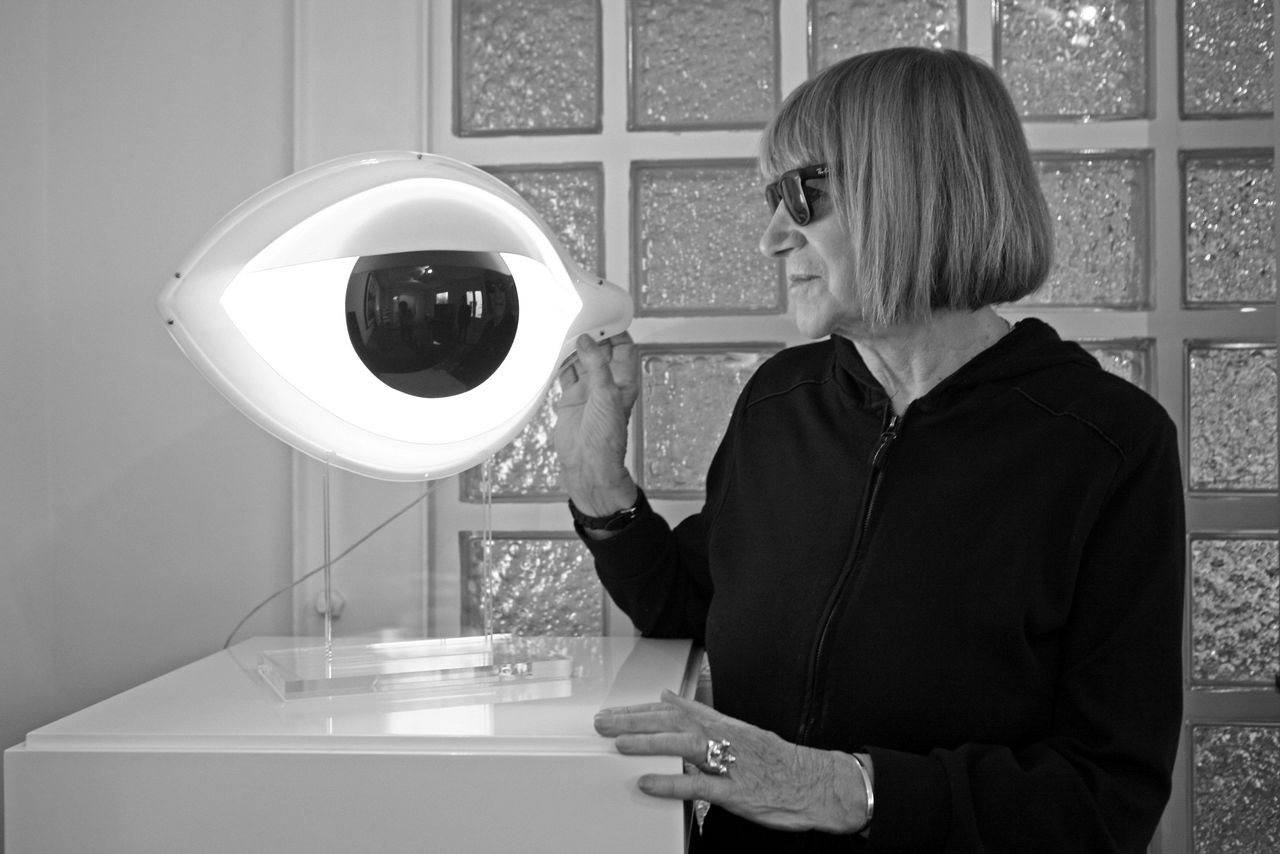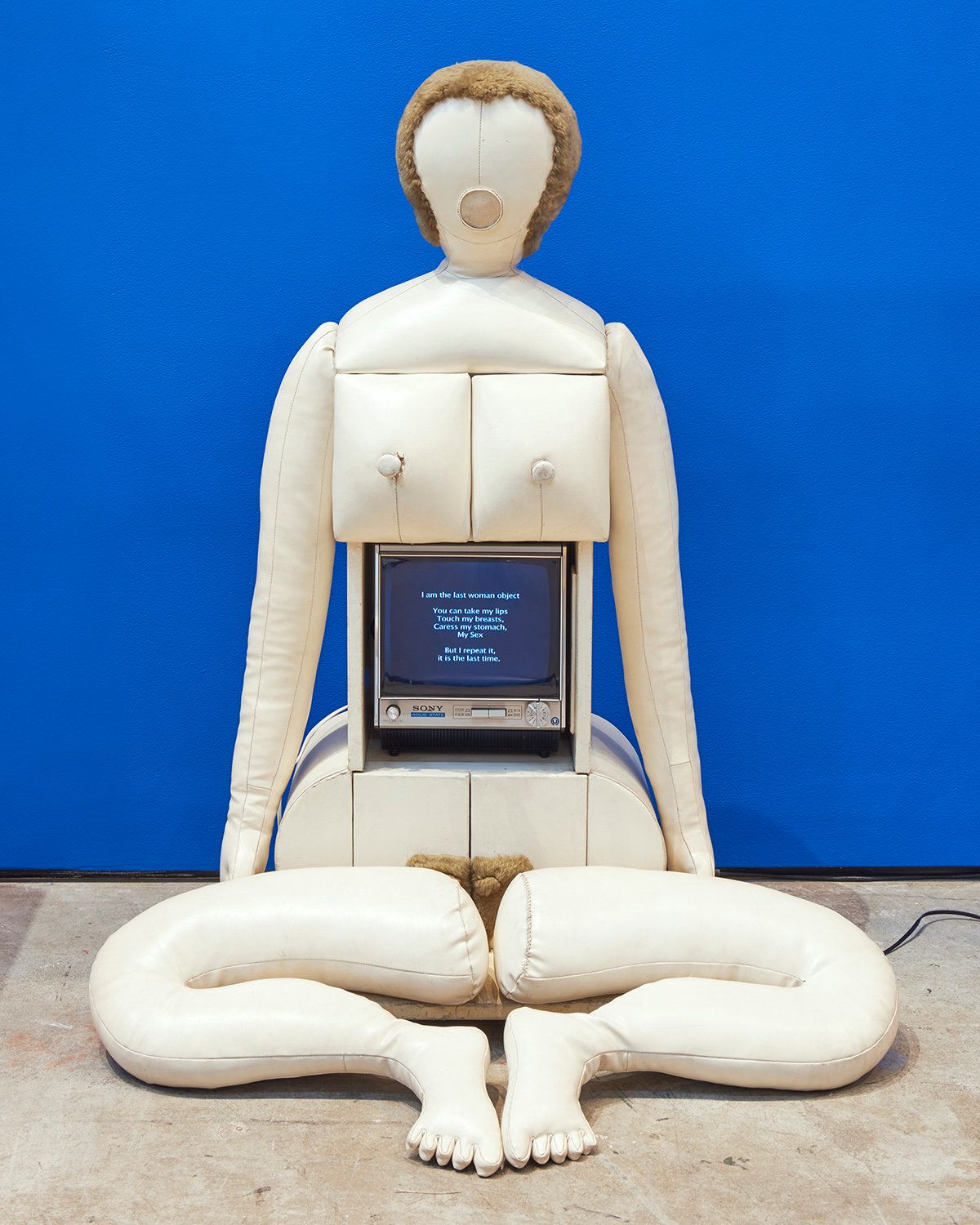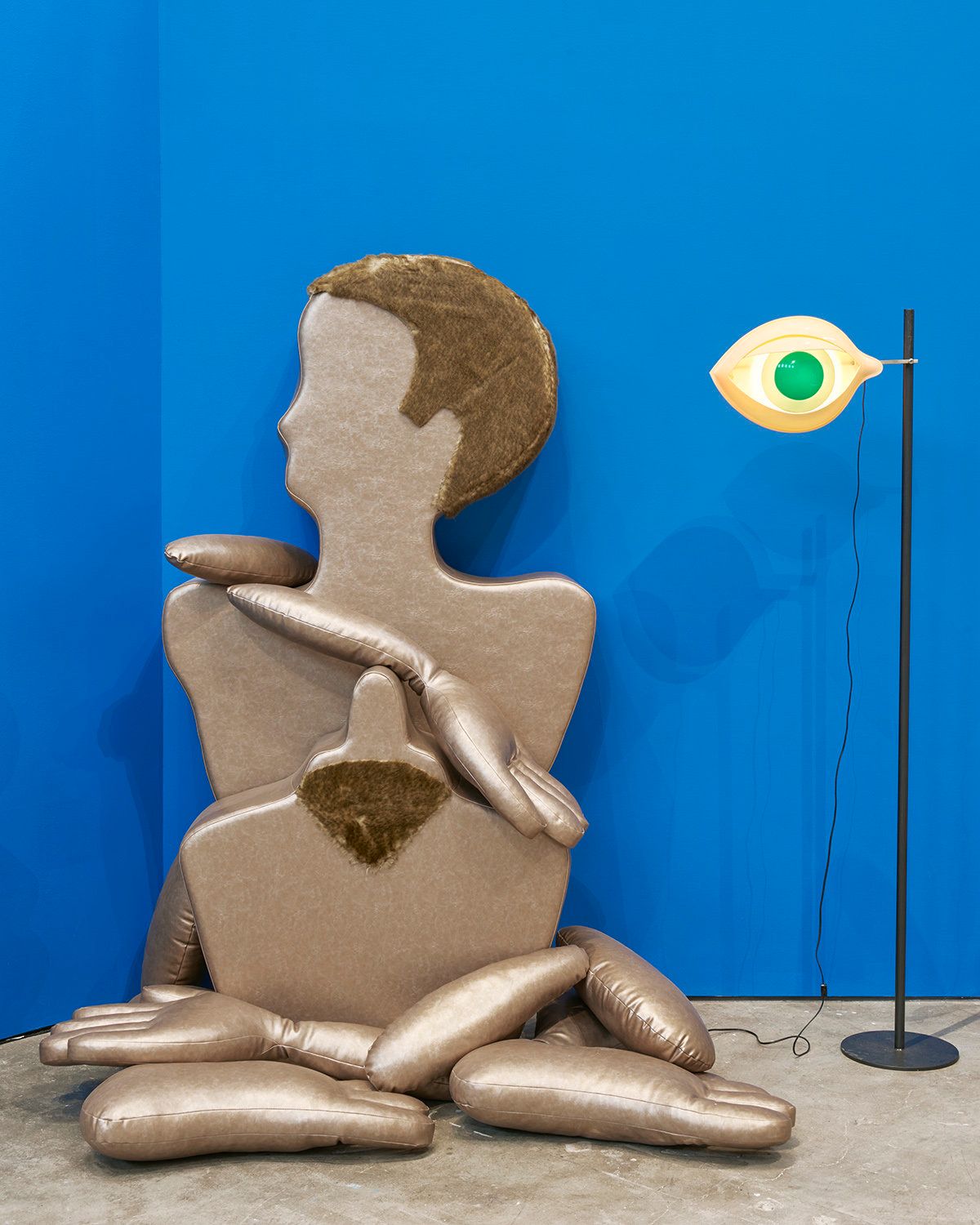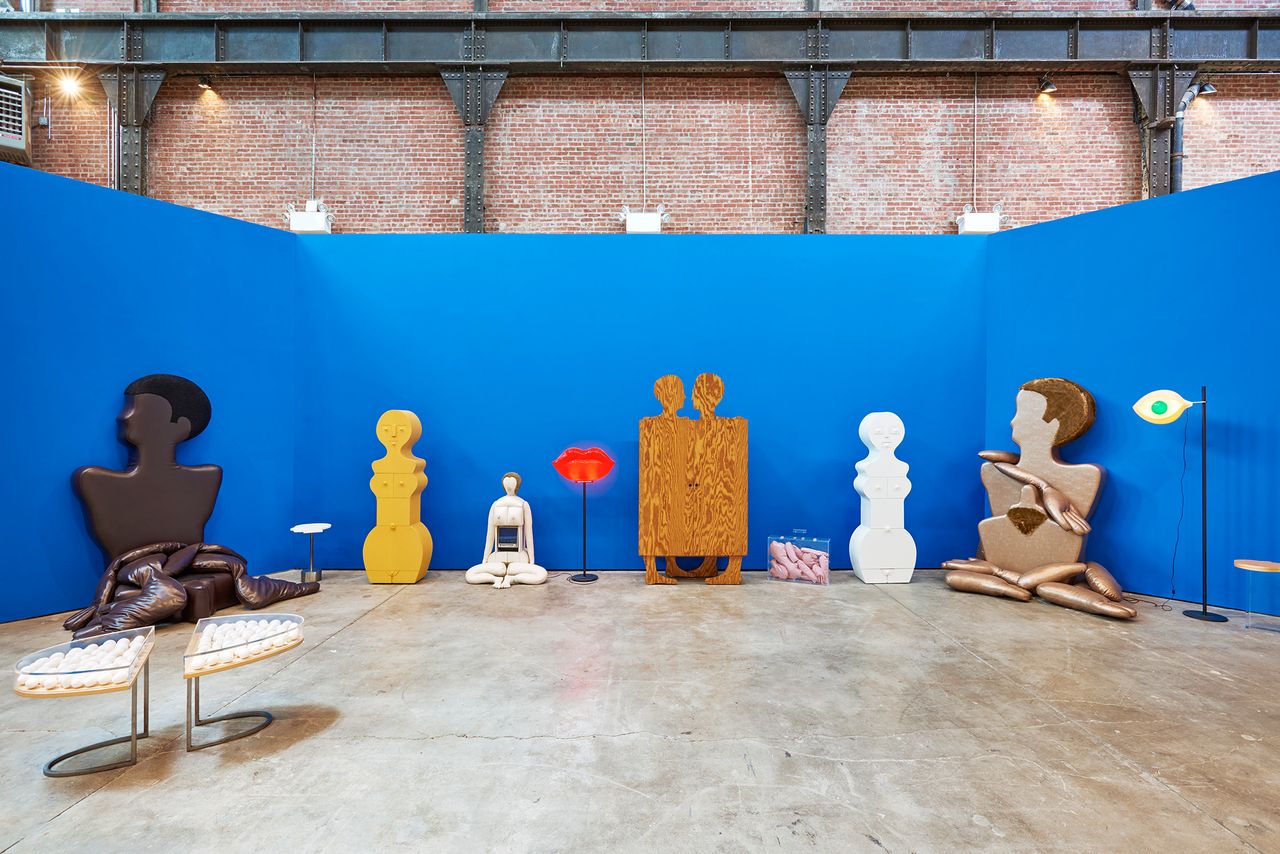Over the past few years, it has become very chic to have boobs on your belongings. Indie craft stores and online marketplaces are full of goods embellished with abstract bosoms ― there are boob vases, boob flower pots, boob pillow cases and even boob bongs. An Etsy search for “boob” yields 168 pages of results alone.
Why are young consumers, women in particular, so enthralled by objects that perpetually flash? Perhaps there is something slyly subversive about reclaiming a body part so fiercely coveted by the male gaze. The trend takes objectification to an absurd extreme. You think boobs are great on women, how about on mugs, necklaces and rugs? It also playfully combats the idea that breasts must be covered at all times. By turning the taboo body part into a stylish accent, women can live topless vicariously through their accessories and home goods.
Boob-adorned belongings took off after the “Free the Nipple” movement began in 2012 and hit a peak this year. However, French-Moroccan artist Nicola L. has been transposing the female body onto domestic objects since the late 1960s. Today’s design phenomenon can be traced back to Nicola’s avant-garde works, which include cleverly titled works like “Lips Lamp,” “Woman Ironing Table” and “Head Library.”

Nicola, like so many women artists throughout history, remains overlooked and under-acknowledged despite her immense contributions to the worlds of art and design. The first museum retrospective to honor Nicola’s work, curated by Ruba Katrib, is now on view at the SculptureCenter, and hopes to address this lack of recognition.
When people think of pop art, names like Andy Warhol, Roy Lichtenstein and Claes Oldenberg come to mind. Yet Nicola, who is now 80 years old, offers a female perspective on the relationship between beauty, art, commodities and value. As curator Flavia Frigeri put it: “It’s really important to tell that story, particularly as so much pop art is about men looking at women.”
Working on the fringe of the pop art movement, her works assume the shapes of human body parts, lovingly exaggerated and abstracted. An outstretched hand, oversized and stuffed, serves as a couch. An eyeball glows with the power of an LED light. A cartoonishly voluptuous female silhouette becomes a commode, with handy drawers where lips, breasts and a vulva would be.
Part anatomy lesson, part feminist critique, part aesthetically-inclined sorcery, Nicola’s work brings bodies into being. They don’t bleed, nor do they breathe, but they speak volumes about the relationships women have with their bodies and their homes, their belongings and their sense of belonging. In an era when women were often relegated to the home and expected to engage in “women’s work,” Nicola made the space, and the job, a lot more interesting. She transformed the domestic space into an experimental art gallery and the things within it into unlikely conspirators.

Katrib first encountered Nicola’s work in 2013. She saw it on an invitation for the artist’s solo show at the New York gallery Broadway 1602. The invite pictured a white leg floating atop a background of thin, horizontal lines, fading black to blue to green. The phantom limb read “Body Language Under the Sun and Moon” in capital letters. Unfamiliar with Nicola’s work, Katrib was intrigued.
She began to research Nicola and came across her “Penetrables,” a series of sculptures the Moroccan-born artist created beginning in 1964, in which flabby rectangles of canvas and vinyl hang low from wooden rods. Unoccupied, the art garments dangle like discarded costumes, inviting viewers to stick their bodies inside and embrace a second skin. But place your extremities in the allotted orifices and the boundaries between artwork and viewer become suddenly and irreparably blurred.
Another work, “Red Coat,” expands upon this idea of slipping into alternate skins ― and shedding them just as fast. The 1969 work consists of a large raincoat, big enough for 11 people to wear at once. With 22 arm holes and 22 leg holes, the garment transforms its wearers into a hybrid beast, a social body whose disparate parts join together into a mystical whole. The multiform jacket reveals the way clothes change how a person moves, acts and lives; the way our exterior shells dictate out interior lives.

Katrib has been researching Nicola’s work for the past year, eventually visiting her in person at the Chelsea Hotel, where the artist’s lived for the past 27 years. “She is very much a product of the 1960s idealist, utopian generation,” Katrib told HuffPost on the phone. “She really stuck with it throughout her life, this ’60s bohemian lifestyle, to the point where she still lives in the Chelsea Hotel amongst her work.”
Nicola lives alone, kind of. Floating heads, disembodied limbs and shapely silhouettes rest motionless throughout her home, doubling as household goods and potential companions. The arrangement hints at Disney fantasies like “Beauty and the Beast” and “Toy Story,” which play off the possibility of unassuming domestic objects attaining humanoid qualities. The Sculpture Center’s exhibition features many such objects, masquerading as home goods while hinting towards loftier abilities. There’s a lamp in the shape of lips, an ironing board in the shape of a woman’s figure. A vinyl, plushy sculpture of a seated woman that looks like a sex doll with a television set inscribed in her abdomen is titled “Little TV Woman: ‘I Am the Last Woman Object.’”
On the one hand, Nicola’s sculptures celebrate bodies by bringing them into being. Writer Alan Jones compared her to Isis, an Egyptian goddess who continuously reassembles her brother’s detached limbs. On the other hand, Nicola alludes to the sour side of objectification.

While the majority of Nicola’s current show puts human bodies, male and female, on display, a portion of the show is reserved for bodies of a slimier variety. “Snail Wardrobe,” “Snail Birdcage” and “Snail Lamp” are among the various gastropod-centric objects.
“I think she’s really into the shell as another type of skin that’s also a type of architecture,” Katrib said. “She is comparing furniture to clothing to skin to the shell of a snail. All are superficial casings that are protective but also necessary to define the form of the entity that relates to it. That is powerful, whether she is dealing with animal form or the female form.”
Together, Nicola’s body of work is radical, playful and preternaturally relevant, raising questions a half century ago still applicable today. What constitutes a body? What constitutes an object? What animates an object and what objectifies a human? Pop art, the dominant movement of Nicola’s early career, relentlessly challenged the relationship between everyday objects and fine art, using soup cans as inspiration and cardboard as material. Interested in furniture and design, she took these inquiries a step further, placing her art in conversation with “women’s work,” unleashing the untapped creative potential of a space that, for many women, signified oppression.
Still, like many women artists of her generation, Nicola remains under-acknowledged despite the quality and influence of her work. She is sometimes referenced as a pop artist, and was included in the 2015 Tate exhibition “The World Goes Pop.” However, as Katrib put it, the artist roamed in and out of various circles and movements without aligning herself too closely with any, operating largely according to her own logic.
Today, the art-as-home-good hybrid is everywhere, from Etsy’s online marketplace to stores and studios like Otherwild. Boobs, no longer tucked away in bras, adorn the most unlikely domestic doodads, and millennial homes are jam-packed with other body parts dissociated from sentient owners. Decades later, Nicola’s intention to breathe life into one’s living space has become a widespread reality.

“Nicola L.: Works, 1968 to the Present” is on view until Dec. 18, 2017, at SculptureCenter in New York.
